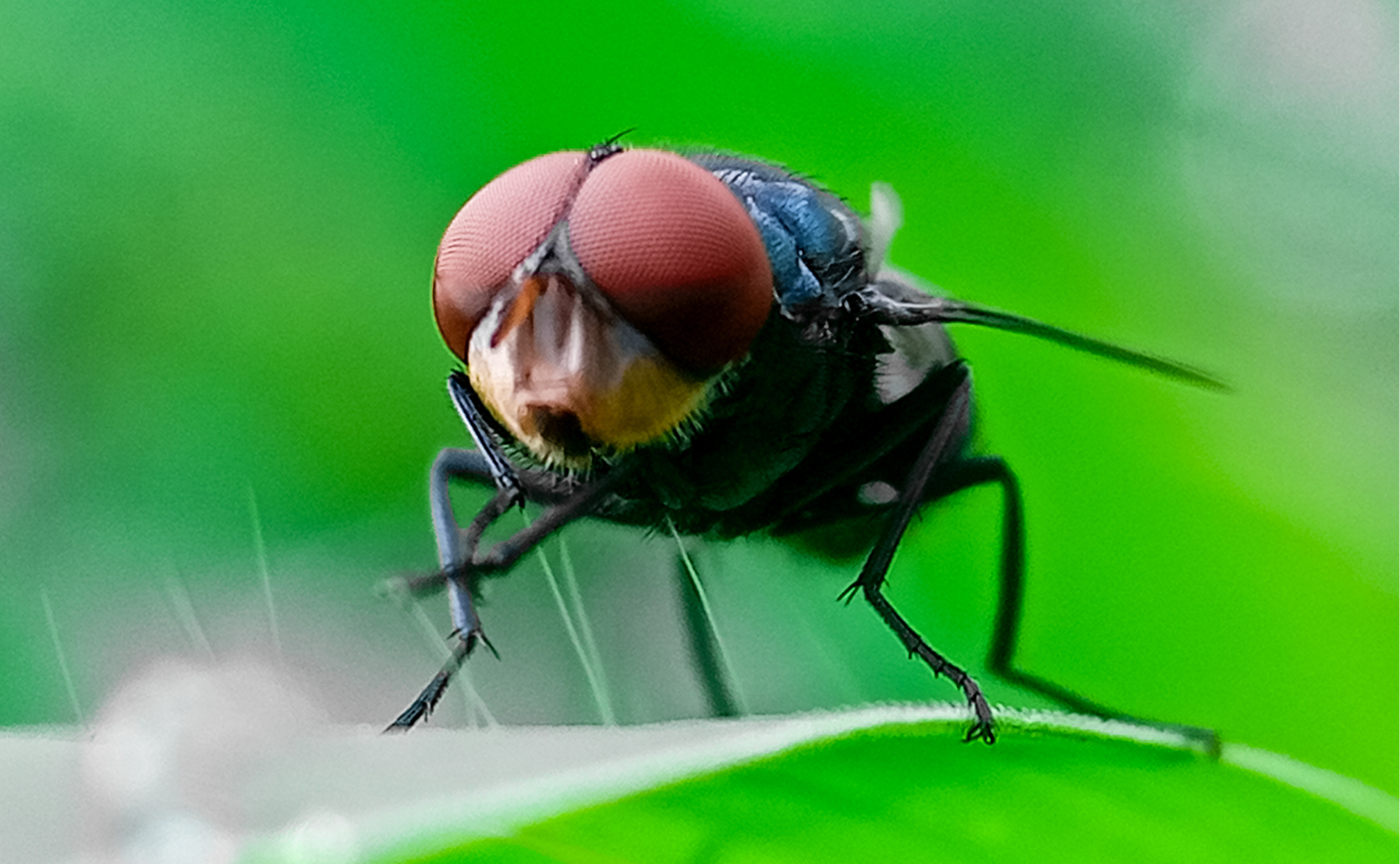It starts with a wound. For most animals, that means a scab, a scar, and eventual healing. For the New World screwworm, it’s an open invitation. This parasitic fly sees raw flesh as the perfect place to raise its young.
The screwworm has long been a menace to cattle and other livestock — and, on rare occasions, humans. But now, scientists have documented the flies attacking mountain tapirs, the shy, pig-like mammals with short trunks that had never before been considered at risk.
The discovery has researchers worried that the parasite’s reach — and its impact — could spread even further. The Department of Health and Human Services has already confirmed the first U.S. case of the flesh-eating screwworm parasite.
We took a closer look at these insects that feel like fodder for a horror movie.
How did the first U.S. screwworm case in humans happen?
The Centers for Disease Control and Prevention and the Maryland Health Department confirmed the case on Aug. 4. Officials said the patient had recently traveled to El Salvador, but has since recovered from the infection. “The risk to public health in the United States from this introduction is very low,” HHS spokesperson Emily G. Hilliard said.
The case is notable not only because it’s the first confirmed infection in a human in the U.S., but also because screwworms can devastate livestock and wildlife if they spread.
What are screwworms?
The New World screwworm is a parasitic fly about the size of a common housefly, with a metallic blue or green body, orange eyes, and three dark stripes along its back. Its larvae have tapered bodies with rings of backward-facing spines, giving them a screw-like appearance.
They target open wounds on mammals, particularly cattle and other livestock. But their menu may be expanding: Scientists recently reported in the journal Emerging Infectious Diseases that the flies have been attacking mountain tapirs — a species not previously thought to be at risk.
The true nightmare begins when they reproduce. A single female fly can deposit hundreds of eggs in one wound, and when the screw-shaped larvae hatch, they twist and burrow into their host, consuming flesh from the inside out and leaving a potentially deadly lesion.
Are they a threat to humans?
While these flesh-eating parasites mostly target livestock and wildlife, they can — and do — infect people. Much like in animals, the female fly lays her eggs in a human’s open wound or sore. When the larvae hatch, they burrow into living tissue, feeding from the inside out — a condition known as myiasis.
Human cases were reported (especially in rural areas) before the U.S. eradicated the parasite in the 20th century. Today, most infections occur in places where screwworms are still present — including Mexico, which recently confirmed its first human case.
Experts warn that if the pest returns to the U.S. in full force, those most at risk would be people in close contact with livestock or living in areas with limited access to medical care. Dr. Megan Niederwerder, executive director of the Swine Health Information Center, warns that early detection is critical: “It’s really important to be looking for maggots in wounds or other body openings.”
Why are screwworms making a comeback?
For the most part, screwworms have been absent from the U.S. since the 1970s, thanks to a government-funded eradication campaign. But for those who remember them, the memory is hard to forget. “Nothing’s nastier than this maggot,” Wyoming rancher Judy McCullough told The New York Times.
That decades-long absence may be coming to an end. After breaching a biological barrier in Panama in 2022, the parasite now threatens to spread north — not only into the U.S., but across Central America and southern Mexico. It’s unclear what exactly sparked the resurgence, but a New York Times report points to a mix of factors: increased movement of cattle and people, shifting weather patterns, and the insect’s own adaptability.
If the screwworm returns, the impact could be far-reaching. The cattle industry is already dealing with high feed prices, drought, and consolidation. And because the parasite doesn’t limit itself to beef, it could also infect other livestock, including wildlife like deer and rabbits, and even pets.
Former eradication officials warn that workforce cuts and reduced agricultural research under the Trump administration could make fighting the parasite harder. More than 1,300 employees at the Agriculture Department’s Animal and Plant Health Inspection Service took buyouts earlier this year, including 300 in veterinary services.
Texas — home to the largest cattle industry in the U.S. — isn’t waiting for an outbreak to hit. Last week, the state’s Department of Agriculture announced it will deploy a synthetic bait called Swormlure, which can trap up to 90 percent of these flies on contact. The plan also includes a new feed additive for livestock and deer, and the development of a vaccine to kill screwworm larvae. “When it comes to safeguarding Texas’ $15 billion cattle industry, we need to focus on action rather than words,” Texas Agriculture commissioner Sid Miller said in a statement.
Whether it’s a mountain tapir in the Andes or a calf on a Texas ranch, the screwworm needs only a single wound to start its grisly work. After decades of absence, that threat is back on the horizon — and this time, scientists say, the stakes could be even higher.









